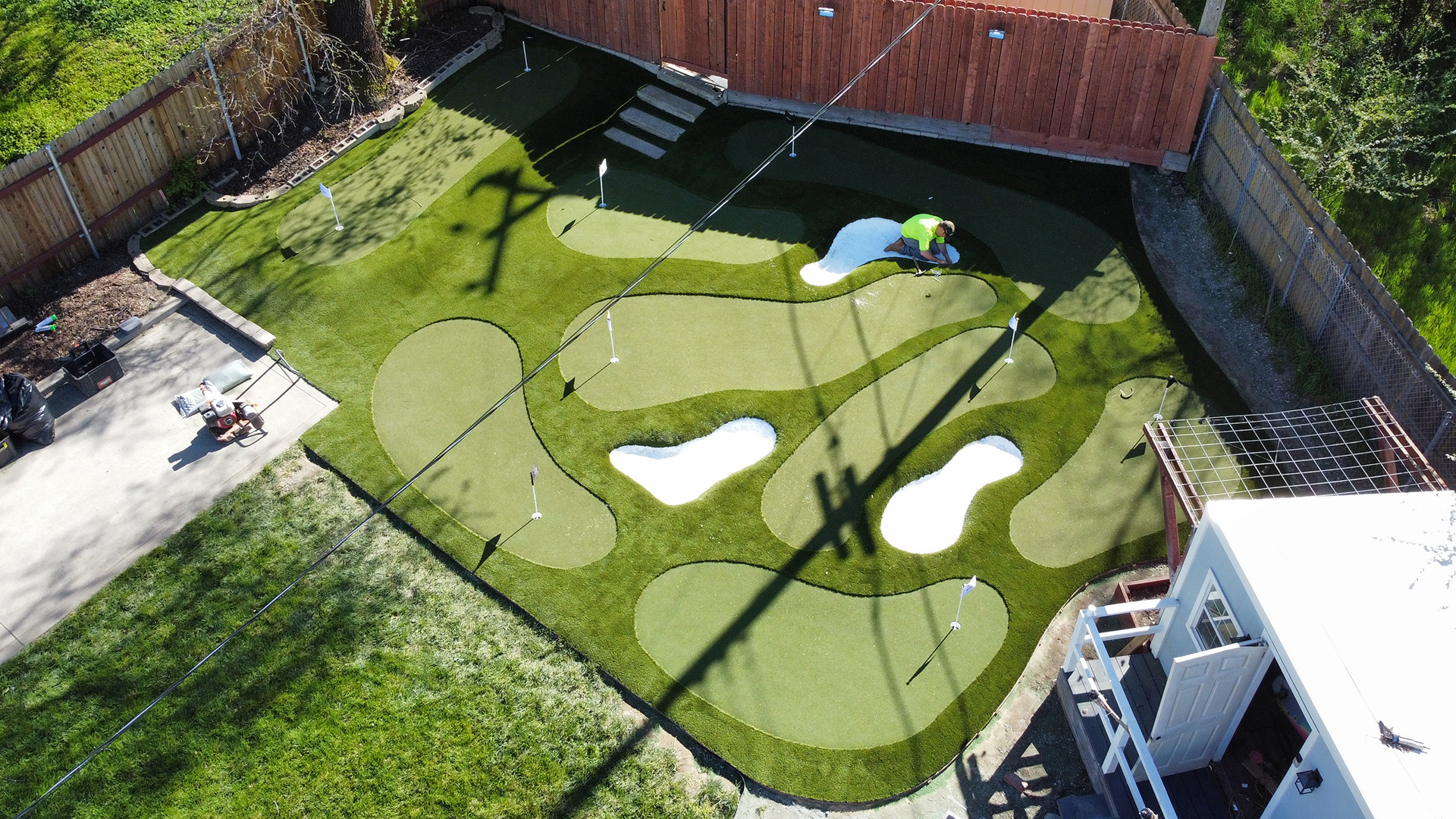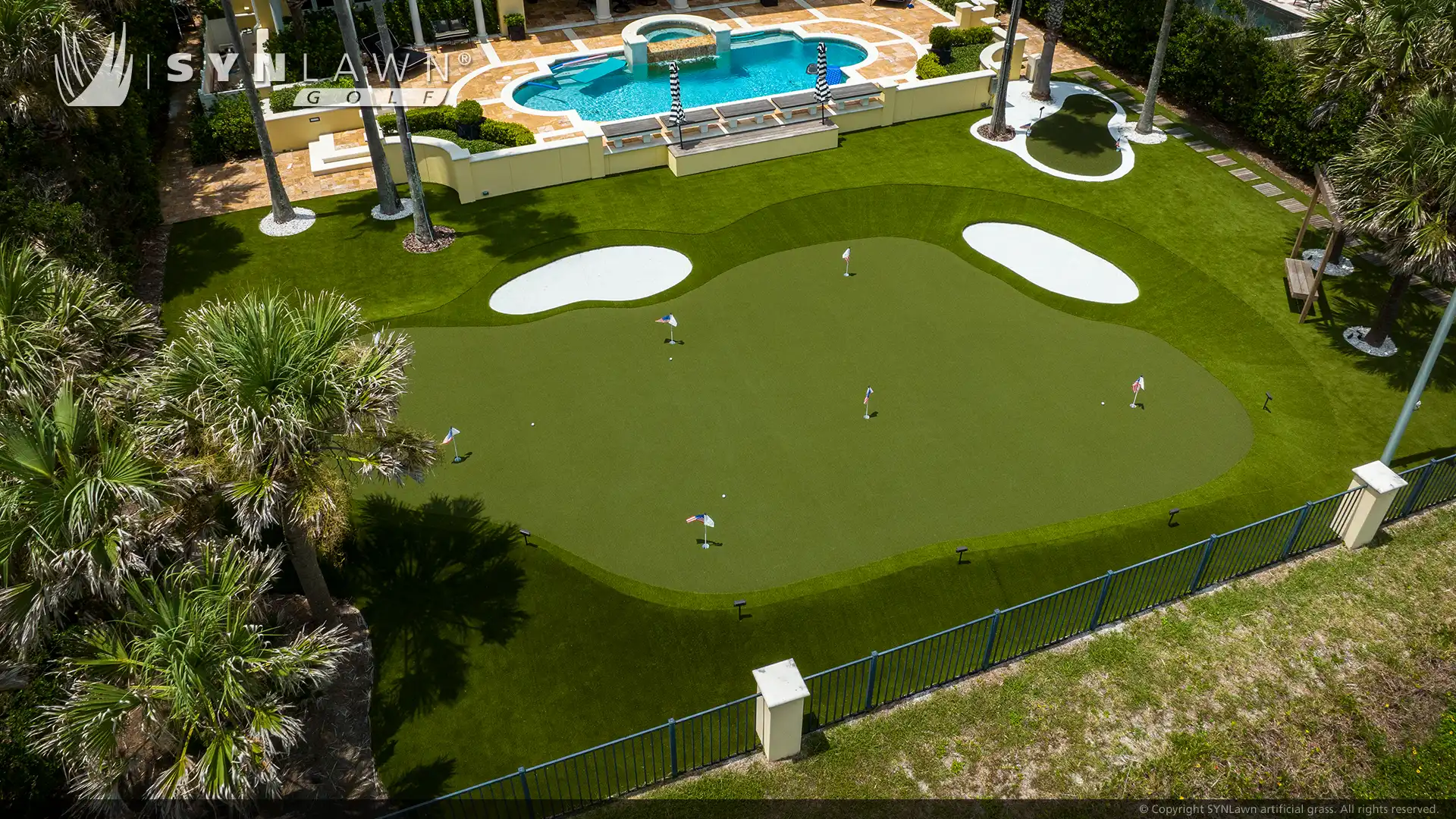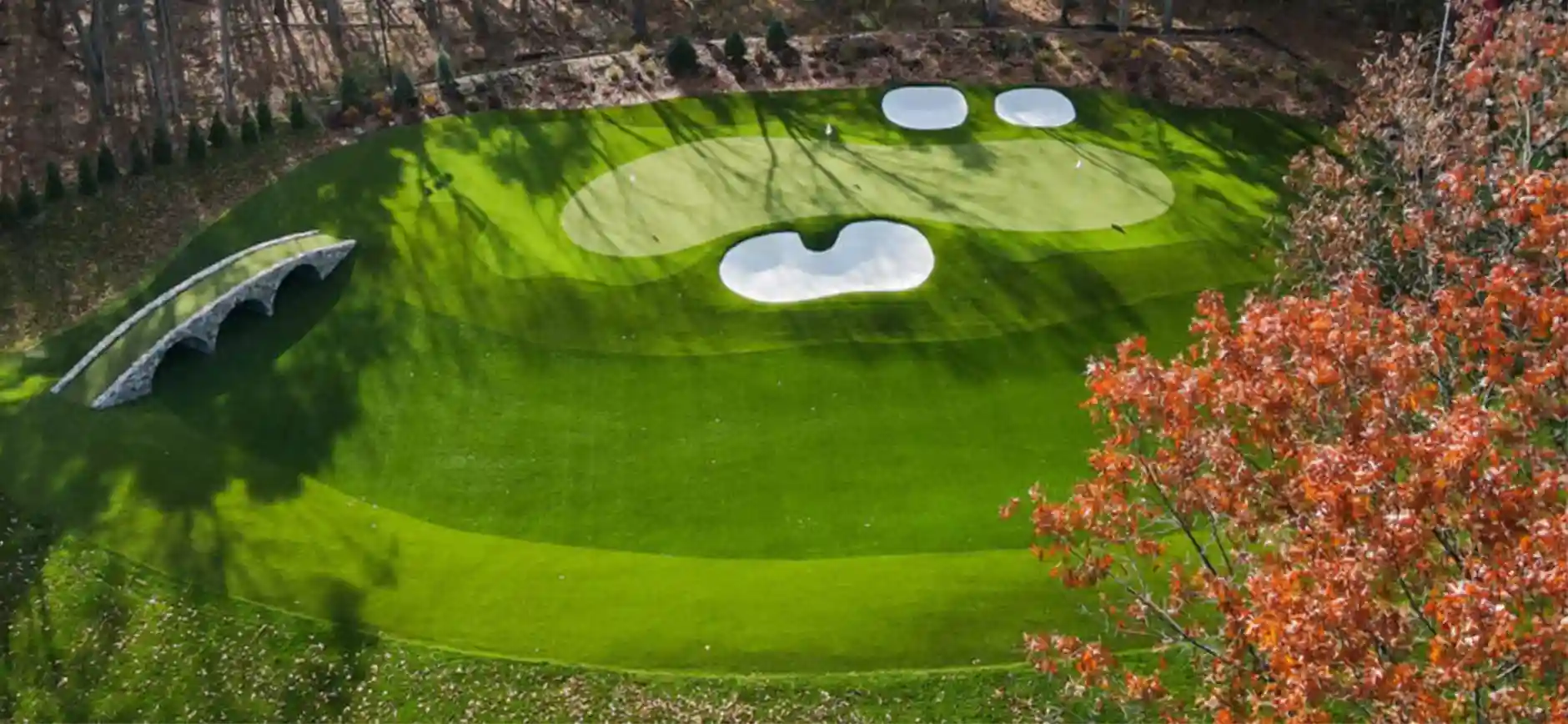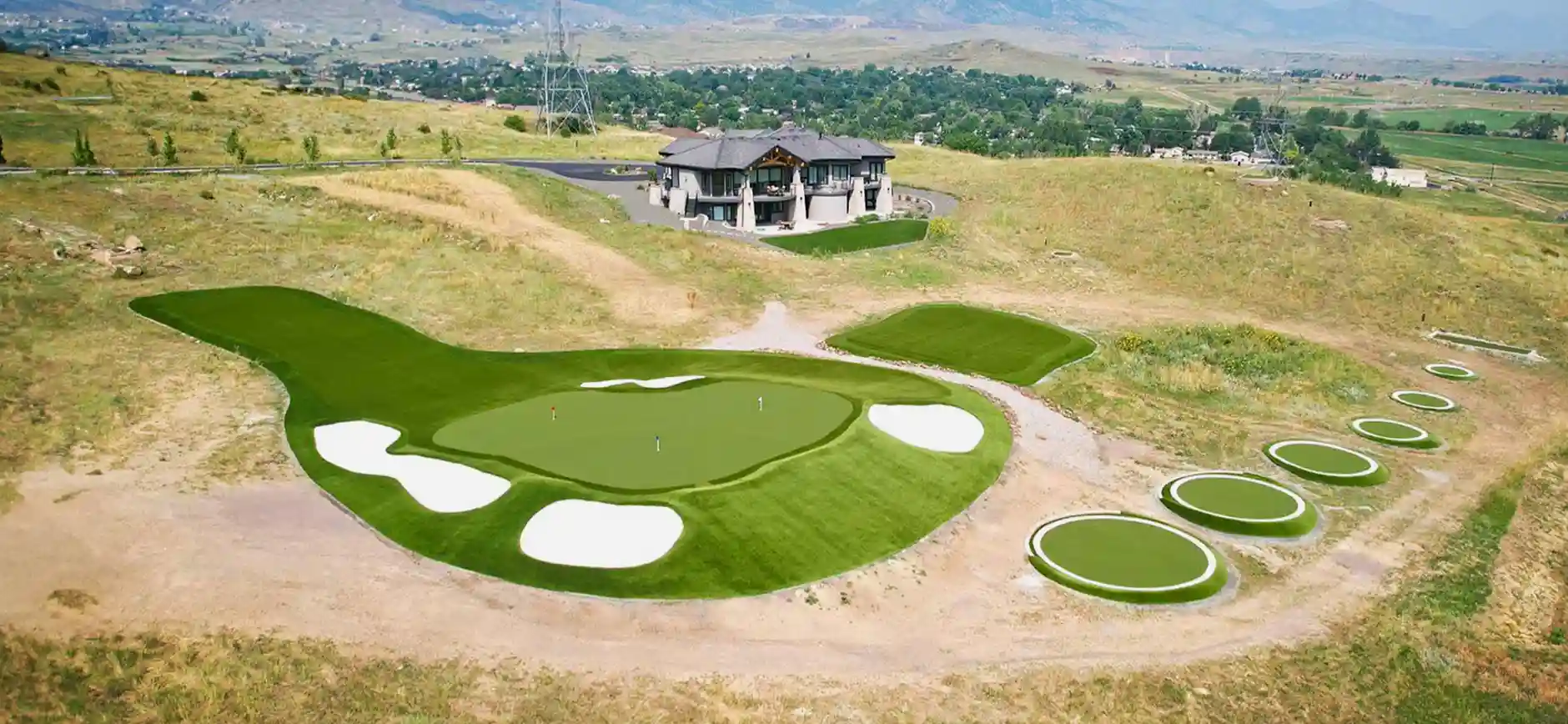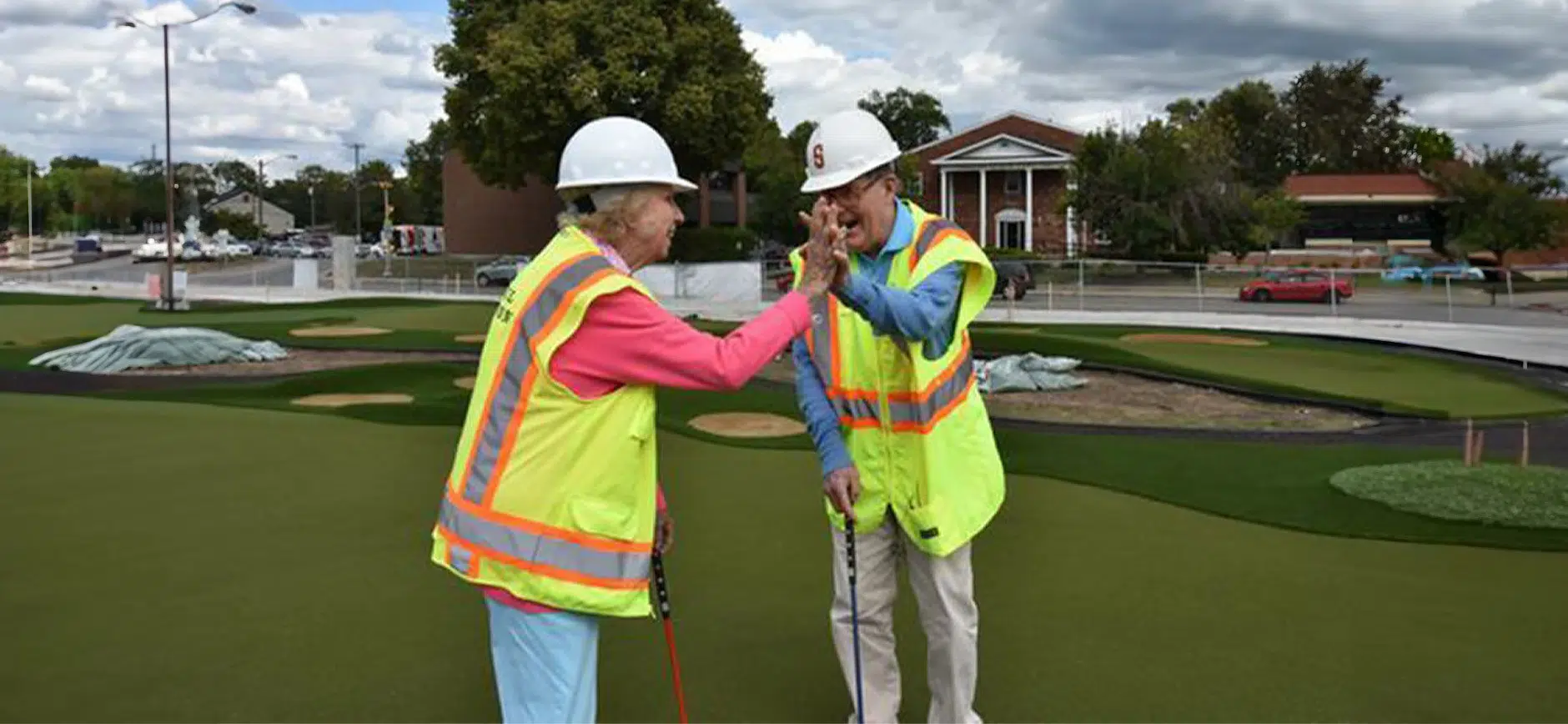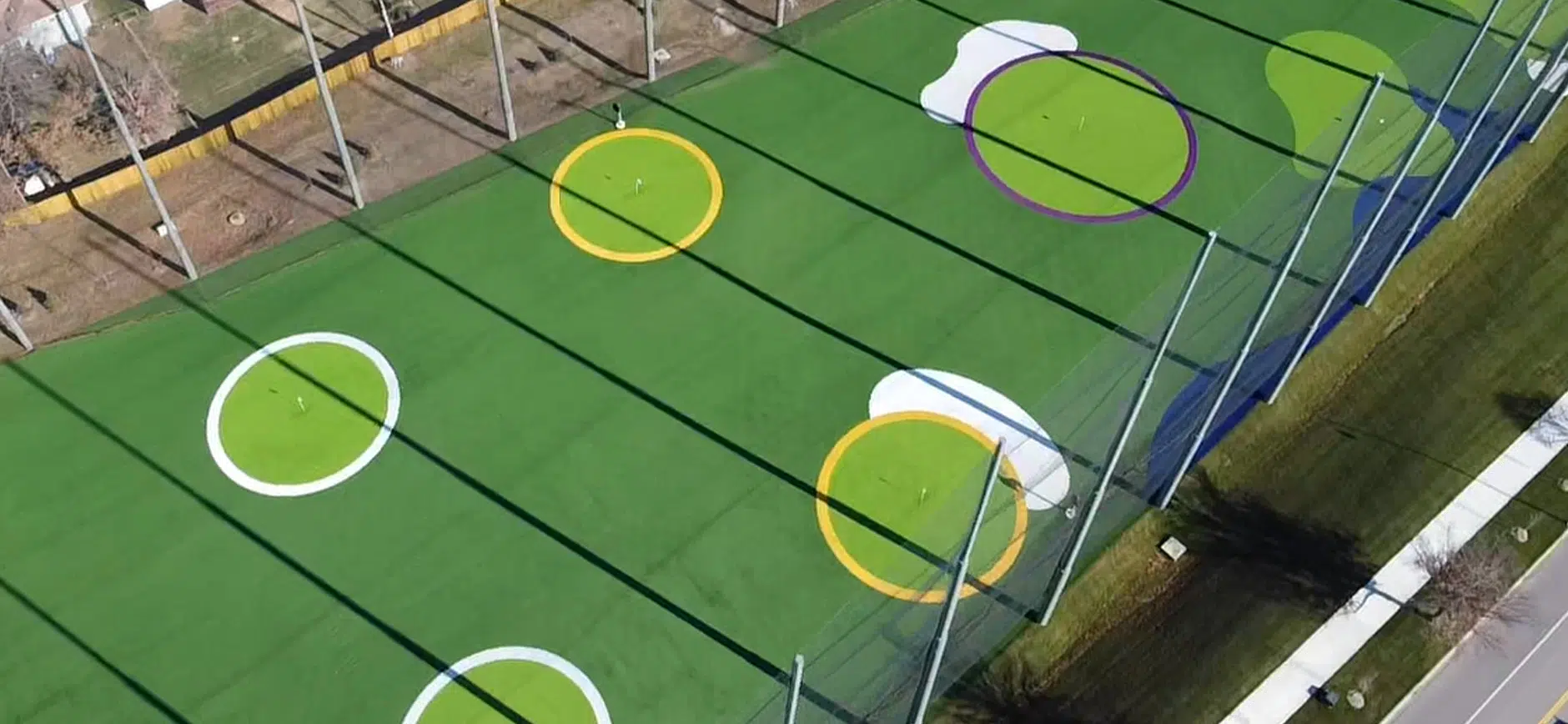Golfers should choose nylon greens
for golf improvement.
01
Golfers should choose nyloThe polypropylene green performed more like a sand trap than a putting green.
02
The putting green is mostly sand which makes it very difficult to maintain consistent performance.
03
Approach shots will hold on a polypropylene green, however the ball dies on impact and does not match the performance of a natural putting green.
04
Nylon putting greens offer a great deal of flexibility during installation because they are mostly fiber with very little use of sand.
05
Only a nylon putting green designed by Dave Pelz and SYNLawn offer golfers a true to life golf experience in their backyards. The Nylon Advantage.n greens for golf improvement.
pELZ PROVES NYLON GREENS
PERFORM BETTER THAN POLYPROPELENE
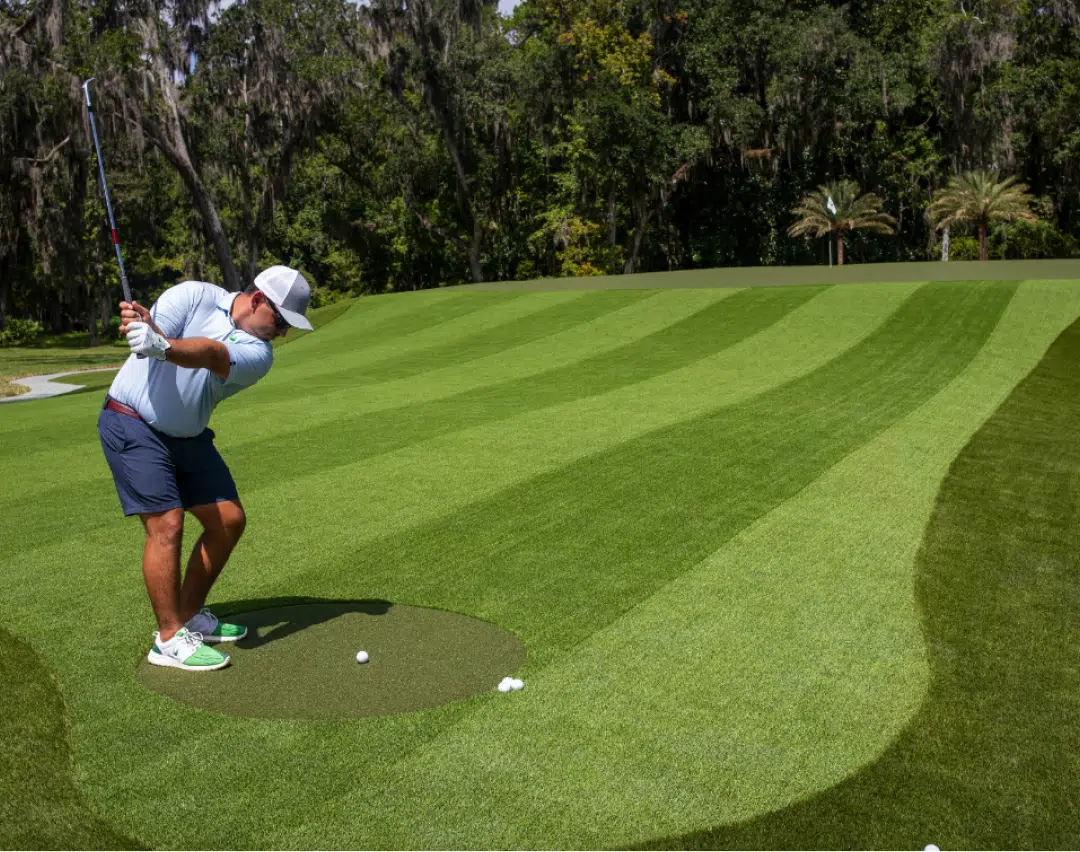
Approach Shot Acceptance
Nylon GreensProven Better!
Installation is the key for nylon putting greens and accepting approach shots. With the right installation method, nylon putting greens can be dialed in to perform like natural grass greens without the excessive use of sand.
Polypropylene Greens
The polypropylene green accepted shots from distances well. However, compared to natural greens the ball reacted more like a sand trap then a golf green. The ball hit the green and stopped quickly, unlike the bounce and roll on a natural grass green.
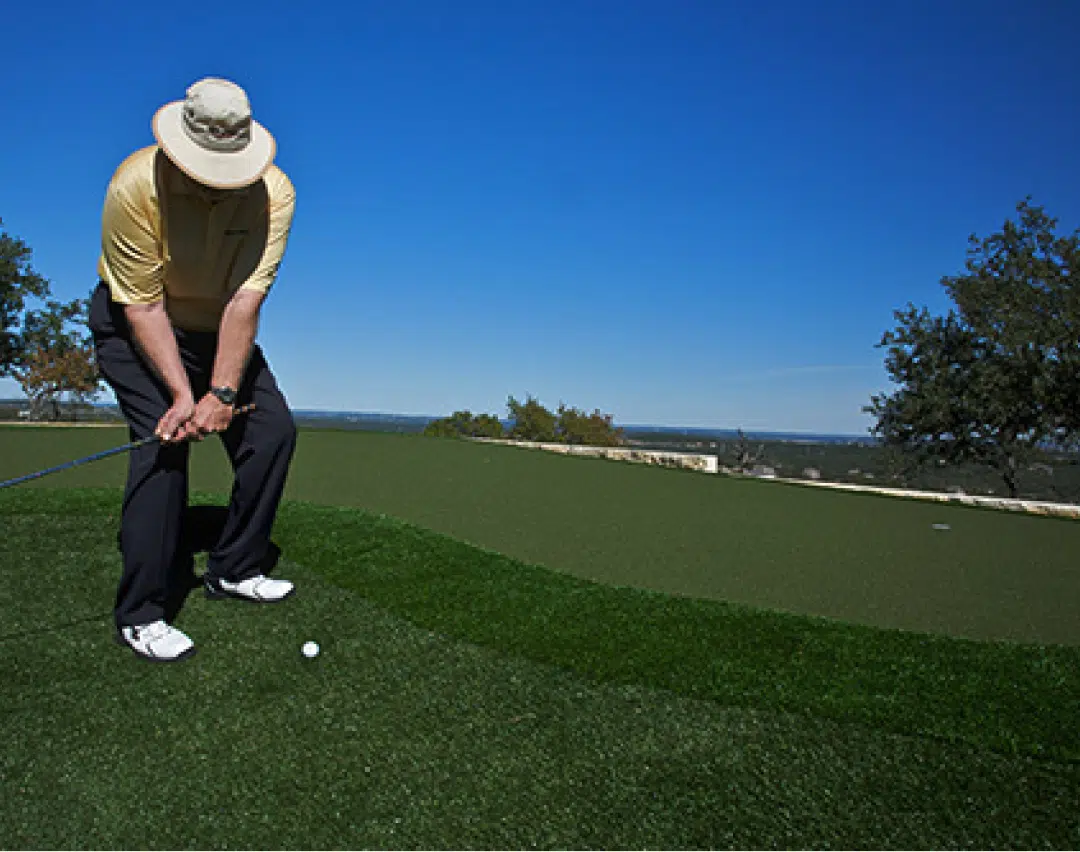
Chip shots
Nylon GreensProven Better!
Balls chipped to a nylon putting green check and roll much closer to the performance of natural putting greens. By choosing SYNLawn Precision Putt® and Classic Pitch putting surfaces, along with SYNLawn professional installation techniques, we can achieve a very realistic golf performance putting green and practice system.
Polypropylene Greens
Balls chipped to a polypropylene green slowed abruptly and the roll to the hole was inconsistent (off-line) compared to a natural grass putting green.
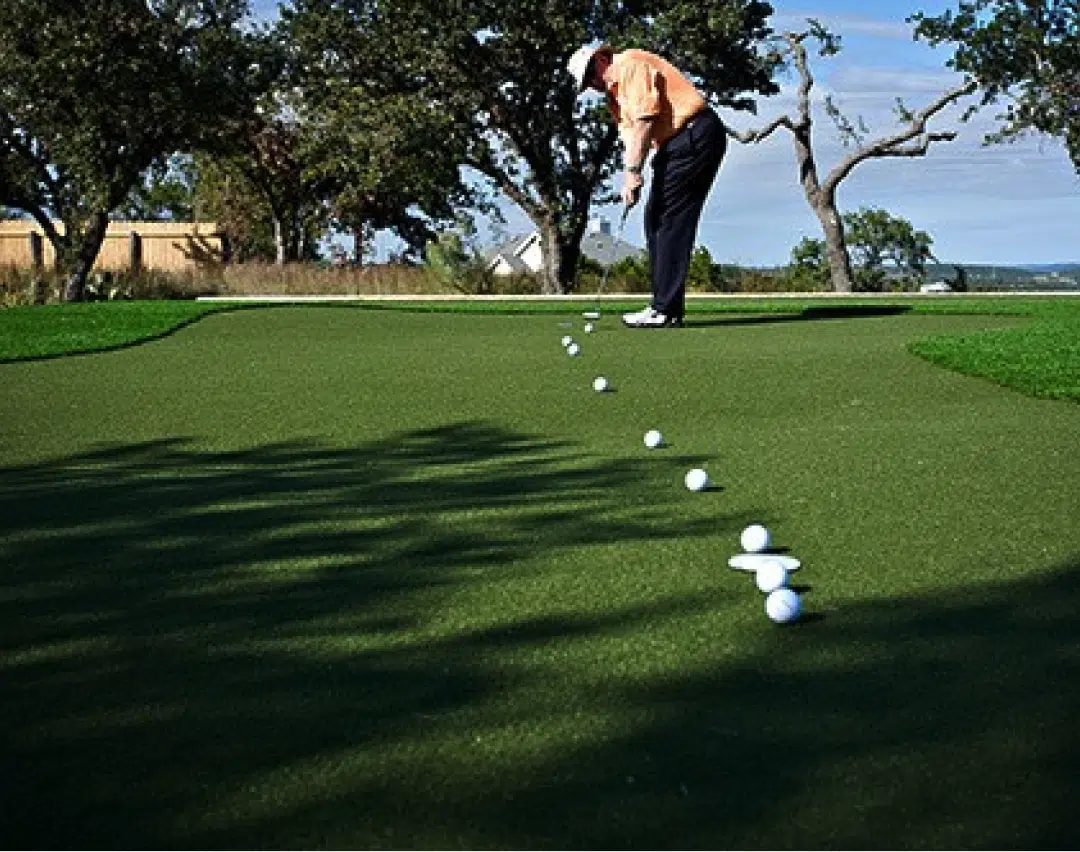
PUTTING PERFORMANCE
Nylon GreensProven Better!
The ball roll on a nylon putting green is far superior to the same roll on a polypropylene green. There is a significant reduction of off-line deviation and oscillation (ball wobble) on a nylon green compared to a polypropylene green. In all the testing, only the nylon putting greens were capable of perorming like a natural grass green.
Polypropylene Greens
Ball roll on long putts was better than the roll on short putts. Balls deviated off-line and there is very little consistency from one putt to the next. As the putt slows, the ball oscillates (wobbles) off-line making controlling putts very difficult.
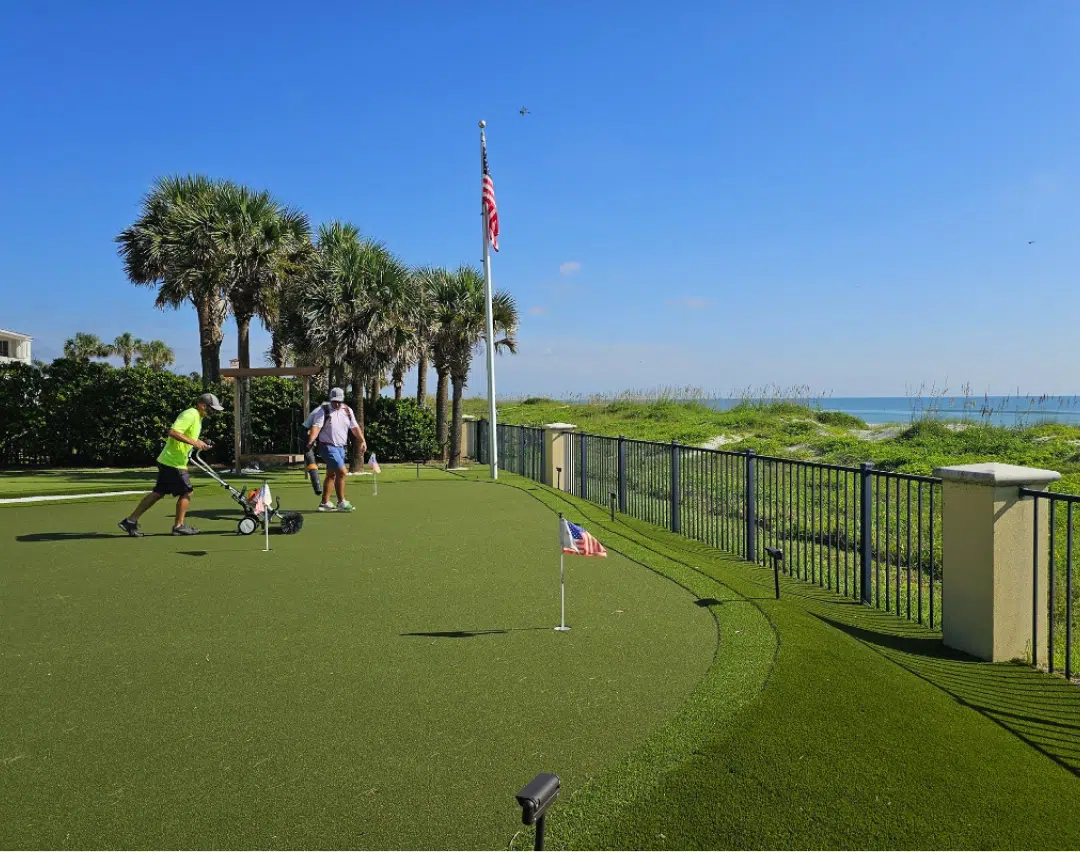
Maintenance
Nylon GreensProven Better!
Because the nylon putting greens do not employ massive amounts of sand in order to perform, the maintenance required of a nylon putting green is reduced greatly.
Polypropylene Greens
Due to the large amount of sand used for polypropylene greens, it is necessary that they are replenished to maintain proper infill levels. The longer a polypropylene green is in use the harder the sand will become. Periodic maintenance will be required to maintain proper performance levels.
from our blog
Unveiling Remarkable Transformations by SYNLawn Golf
FAQ
Your Comprehensive Guide to Frequently Asked Questions and In-Depth Insights.


